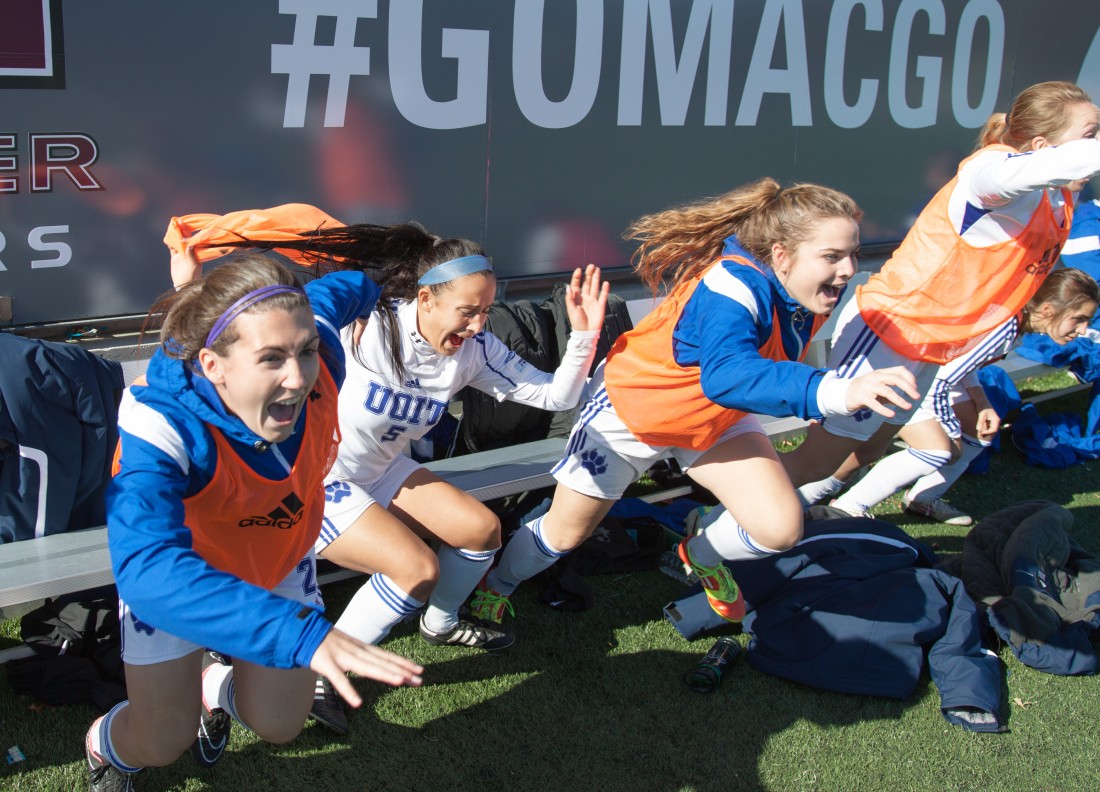This year marks my 3rd season as Assistant Coach and Fitness Coach with the University of Ontario Institute of Technology (UOIT) Ridgebacks Women’s Varsity Soccer Team. The Women’s Soccer program at UOIT itself also happens to be only 3 years old, having been introduced in the winter of 2012. The first three years in our team’s history have been very successful. We qualified for the play-offs in year one, and improved upon that record in year two by advancing to the OUA West Quarter-Finals. Moving into a new division (OUA East) in year three. we finished the season in 2nd place, with a 12-2-2 record (going unbeaten in our first 12 games), and even earned a CIS National Top-10 ranking for the majority of the year, finishing with a #7 ranking heading into the play-offs. We continued to get good results in the post-season, earning a bronze medal in the OUA Final Four, plus a place in the 2014 CIS National Championships at Laval University in Quebec City, as the 3rd place team from Ontario. The success of the UOIT Ridgebacks Women’s Varsity Soccer Team owes itself to numerous factors and people, the most important of which is the Head Coach who literally built the team from scratch three years ago, Peyvand Mossavat (he was also named OUA East, and CIS Coach of the Year this season). I am honored to have been a part of the coaching staff since the team’s inception, and to have contributed to its impressive performances on the pitch.
My next four posts will briefly describe of the four physical preparation strategies that I and the Coaching Staff used, which have contributed to our team’s success over the past three year in general, and specifically during the incredible 2014 season:
4. Get the in-season fitness training right (with, and without the ball):
Even though the university competitive season is short, with the right timing of training, teams can still improve fitness during the season. In general, schedule allows for only one day per week of intense fitness training. In the first month (September) aerobic training should be done with a high intensity (speed) but low volume (number of repetitions/distance covered). Work periods of 30 seconds – 1 minute, with work-to-rest ratios of 1:2 – 1:4, are most effective. It is also useful to use a combination of hard running workouts (mush easier to control for intensity) with technical exercises/small-sided games (more specific to soccer). As the season progresses into the second month (October) a switch must be made to performing repeated sprint training and speed training. Must shorter work periods (5-10 seconds) with much longer work-to-rest ratios (1:5 – 1:10) are most effective. Again, combining running and sprinting exercises both with and without the ball works best.


Leave A Comment